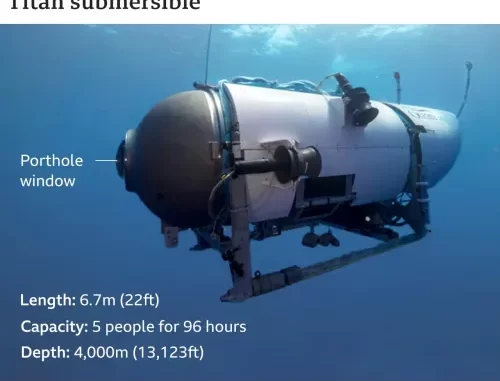
The Titanic submersible’s exact location and the condition of the five crew members onboard are unknown. If the vessel is still intact, it may only have a few hours of oxygen left, creating a race against time to find the sub before it is too late.
However, that timeline is not always rigid. Dr. Ken LeDez, a hyperbaric medicine expert at Memorial University in St. John’s, Newfoundland, told BBC News that, depending on the conditions, some of those on board may live longer than expected.
- “It depends on how cold they get and how effective they are at conserving oxygen,” he said, explaining that shivering consumes a lot of oxygen while wrapping up in a huddle helps to conserve heat.
According to him, running out of oxygen is a gradual process. “It’s not like turning off a light; it’s like climbing a mountain; as the temperature drops and metabolism slows, it depends on how quickly you ascend that mountain,” he explained.
While admitting that we do not know the full situation inside the submersible, Dr. LeDez stated that conditions may differ from person to person and that while it is a “disturbing conversation,” some may survive longer than others.
The US Coast Guard’s Rear Admiral John Mauger stated on Wednesday that there were a number of unknowns in the search and rescue mission.
“We do not know the rate of oxygen consumption per occupant on the sub,” Rear Adm. Mauger told the BBC.
Dr. LeDez also stated that running out of oxygen isn’t the only threat to those on board.
The vessel’s electrical power may have been lost, which is likely to have played a role in controlling the amount of oxygen and carbon dioxide inside the vessel.
As the oxygen level drops, the proportion of carbon dioxide expelled by the crew increases, potentially having fatal consequences.
“As carbon dioxide levels rise, it becomes sedative, like an anesthetic gas, and you will fall asleep.”
Hypercapnia, or having too much gas in one’s bloodstream, can be fatal if not treated.
Former Royal Navy submarine captain Ryan Ramsey claims he looked at videos of Titan’s interior and saw no carbon dioxide removal system, known as scrubbers.
“That is the most difficult problem for me of all of them,” he says.
At the same time, the crew is at risk of hypothermia, a condition in which the body becomes too cold.
Leave a Reply